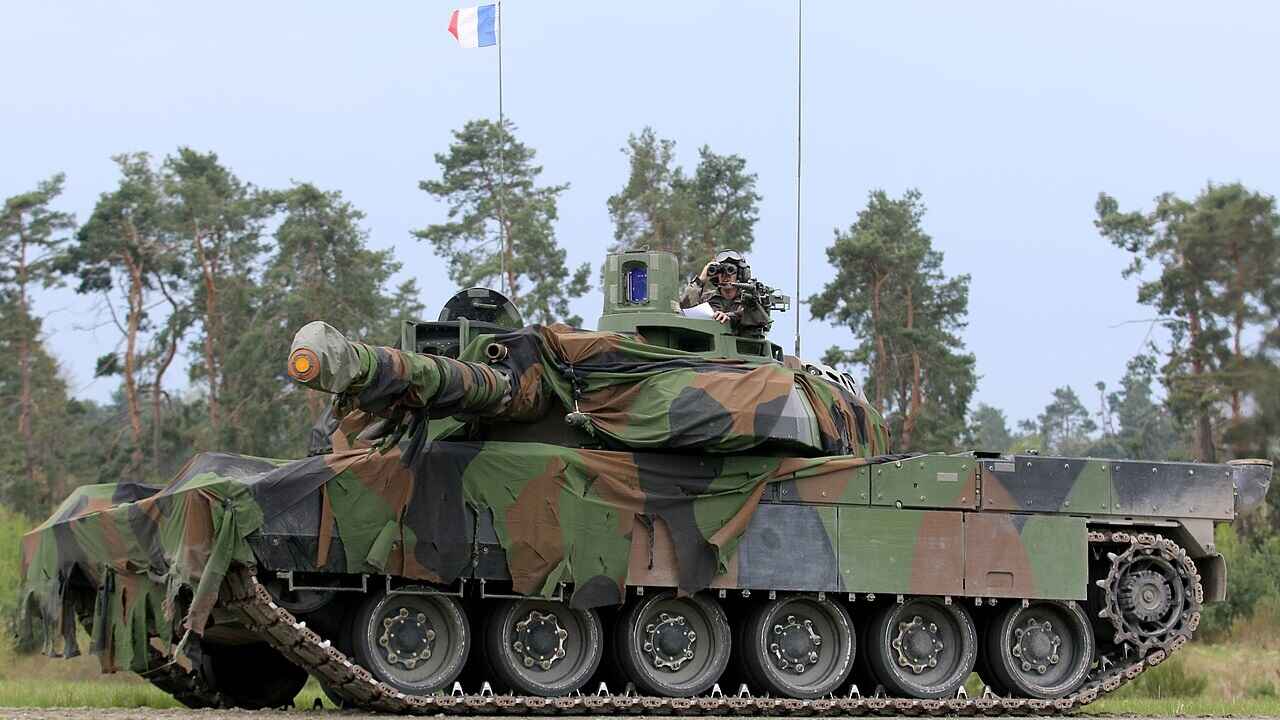France is now the latest member of the international alliance that could see its tank fleet greatly expanded. It isn’t actually ordering new vehicles, but will significantly upgrade the MBTs in its fleet.
The Russian military has seen thousands of its tanks destroyed in its ongoing war in Ukraine—including everything from its most modern main battle tanks (MBTs) to vintage tanks that should be in a museum rather than a battlefield. It could take a generation, or perhaps even longer, for the Kremlin to rebuild its tank fleet.
Meanwhile, multiple NATO members have been seeking to greatly expand their armored forces. The UK’s military is developing the Challenger 3 MBT, while the Royal Netherlands Army announced plans in September 2024 to establish a new tank battalion equipped with 50 advanced German-made Leopard 2A8 MBTs. In December, it was also reported that the Lithuanian Army would create an armored unit made up of an additional 48 Leopard 2A8s.
Then there is the fact that Turkey and Greece—perhaps fearing each other, despite being nominal allies—maintain large tank fleets, which are respectively increasing in size!
And given Russia’s losses, it is even possible that the Polish military could overtake it as Europe’s tank powerhouse—as Warsaw has gone on a tank buying spree, acquiring American M1 Abrams and South Korean K2 Black Panther MBTs.
Réservoirs Beaucoup
France is now the latest member of the international alliance that could see its tank fleet greatly expanded. It isn’t actually ordering new vehicles, but will significantly upgrade the MBTs in its fleet.
On January 28, the Direction Générale de l’Armement (DGA)—France’s defense procurement agency—announced it ordered 100 of its Leclerc MBTS to receive the major overhauls. That further expanded on previous upgrade orders for 50 of the domestically-made vehicles in 2021 and again in 2022.
Rencontrez le Leclerc
Designed during the Cold War, the Leclerc was originally built to counter a potential Soviet tank advance. It features a powerful CN120-26 120 mm smoothbore gun, advanced targeting systems, and a SACM V8X Hyperbar diesel engine that provides exceptional speed and power.
Since the French Army’s FT light tank rolled into action during the First World War and introduced the concept of a turret, almost all tanks (with the exception of some tank destroyers) have been built around the traversable weapons mount. This is certainly the case with the Leclerc, where armor protects the turret, and the tracks move it. The turret provides the offensive power that the tank exists to provide.
For the Leclerc, designers installed the CN120-26, a 120 mm version of the F1 smoothbore gun. The CN120-26 is a 52-caliber gun with a magnesium-alloy thermal sleeve. It offers a higher muzzle velocity than the 44 caliber guns typically found on other MBTs.
What The Upgrades Will Bring
Much like the American M1 Abrams, it has received significant upgrades in the decades since it first entered service. The 60-tonne tanks’ biggest updates will be to its sensors and onboard systems.
According to The Defense Post, “The upgraded Leclerc will have barrage electronic warfare jammers and new protection kits — both on the flanks and underneath. The enhanced protection will make the tank less vulnerable against improvised explosive devices, mines, and rockets.”
The latest version, the Leclerc XLR will be the mainstay of the French Army until the Main Combat System of the Future (MGCS)—the Franco-German effort to develop a replacement for the Leopard 2 and Leclerc—enters service, which is currently scheduled to occur around 2040.
About the Author: Peter Suciu
Peter Suciu is a Michigan-based writer. He has contributed to more than four dozen magazines, newspapers, and websites with over 3,200 published pieces over a twenty-year career in journalism. He regularly writes about military hardware, firearms history, cybersecurity, politics, and international affairs. Peter is also a Contributing Writer for Forbes and Clearance Jobs. You can follow him on Twitter: @PeterSuciu. You can email the author: [email protected].
Image: Wikimedia Commons.
